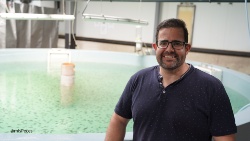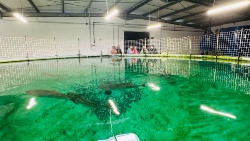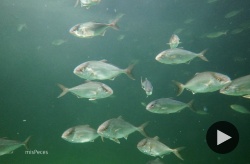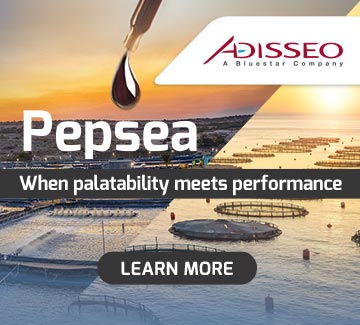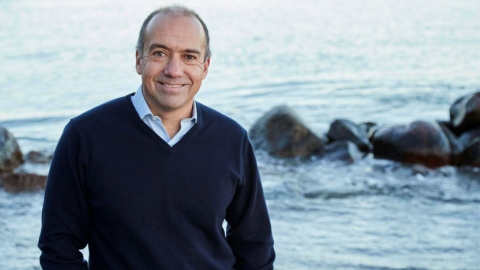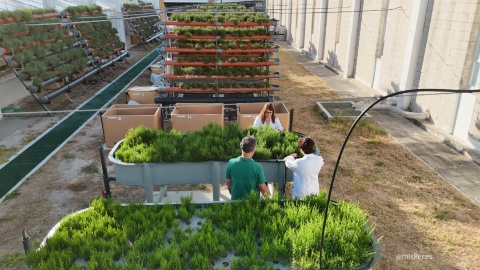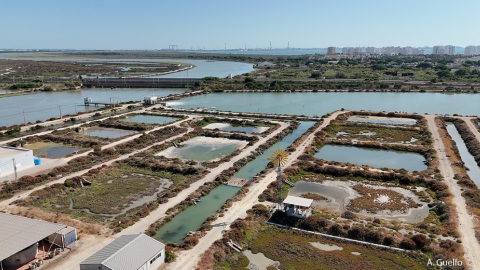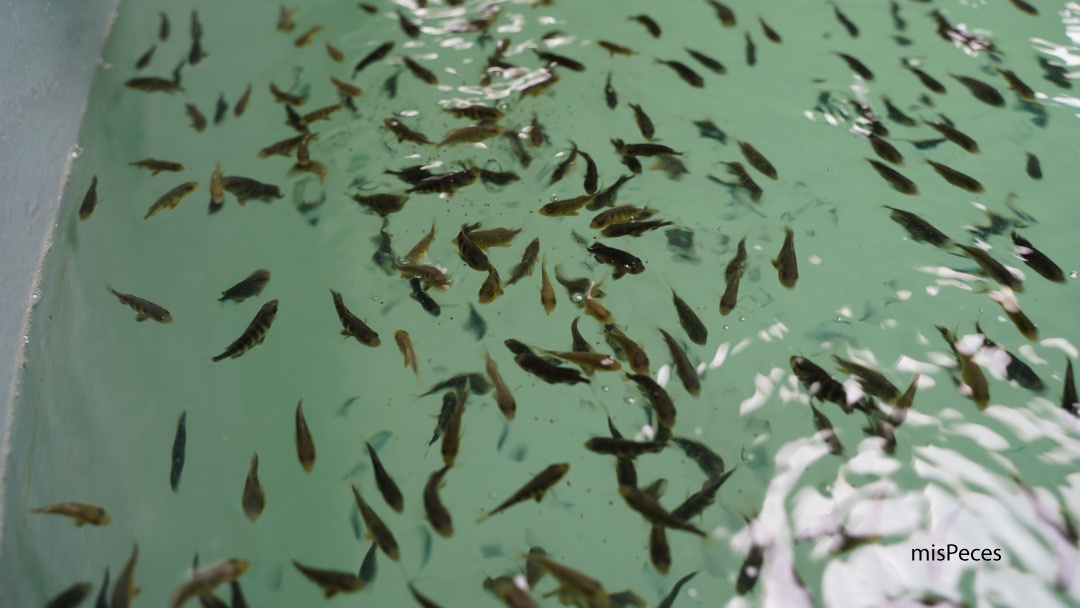 Greater amberjack fry |@misPeces
Greater amberjack fry |@misPeces
Acuicultura Cádiz EME450.1 SLU, company owned by Kingfish Norway AS through Futuna Blue España SL, is now well underway with the construction of a state-of-art land-based greater amberjack (Seriola dumerili) farming facility, using cutting-edge recirculating aquaculture system (RAS) technology.
The site’s initial production capacity will be 450 tonnes per year. This facility must marks just the beginning of a far more ambitious plan to produce 5,000 tonnes of this emerging Mediterranean aquaculture species on land leased from the Port Authority of the Bay of Cádiz, in El Puerto de Santa María, Spain.
What sets this company apart from the other aquaculture ventures springing up across Spain is its unique competitive edge: it is currently the only one operating a hatchery and nursery unit for greater amberjack in the existing Futuna Bue España facilities, right next to the new development site.
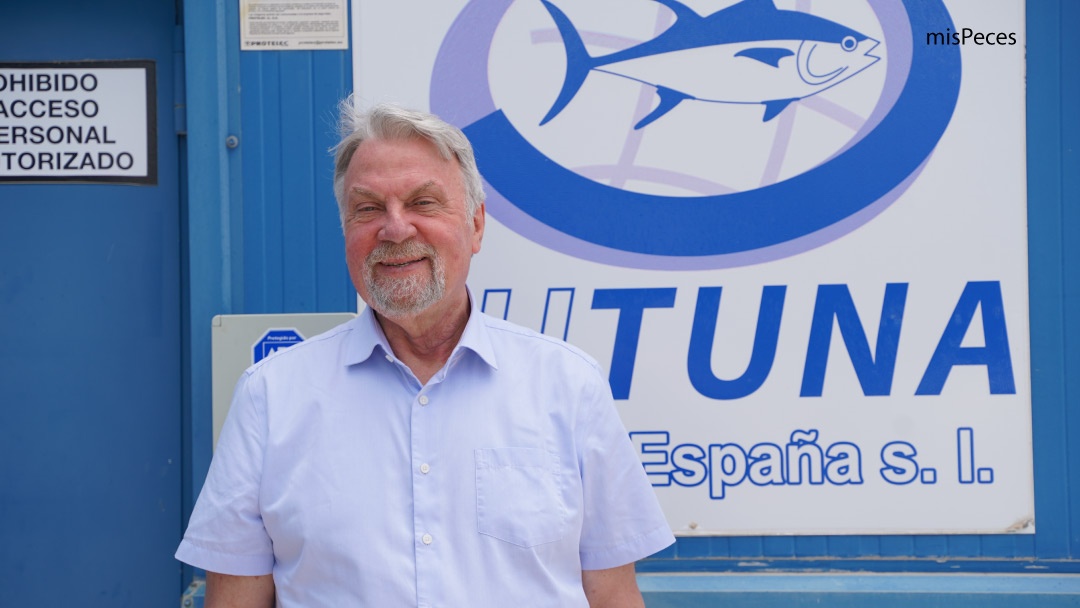 Ole Pette Krabberød | @misPeces
Ole Pette Krabberød | @misPeces
Speaking exclusively to misPeces, Ole Pette Krabberød, CEO of Futuna Blue España and Acuicultura Cádiz EME450.1 SLU, explained that the decision to focus on greater amberjack was inspired by the outcomes of the EU-funded Diversify project, and supported by significant institutional backing.
The Andalusian regional government (Junta de Andalucía) has awarded the company a €6.89 million grant from the European Maritime, Fisheries and Aquaculture Fund (EMFAF), covering 49.23% of the total €14 million investment.
Krabberød emphasized that this initiative represents both a commitment to the species and to the highly experienced international team behind it. “We are aquaculture professionals, not speculative investors,” he stressed, highlighting that every step of the project is underpinned by deep sector expertise.
“We are aquaculture professionals, not speculative investors”
The project is being driven by a Norwegian family with a strong tradition in salmon aquaculture, bringing with them extensive experience in managing large-scale farming operations.
The location of El Puerto de Santa María was chosen for its “ideal conditions for farming greater amberjack”, a species with strong market potential thanks to its “fast growth rate, excellent taste, and rising consumer demand.”
Krabberød noted that the current facility is only the first step in a much larger development plan. “Our aim is to reach 5,000 tonnes of production using RAS technology, starting with this initial 450-tonne phase.”
The international scope of the project is also reflected in its recruitment strategy, which seeks to attract professionals with global aquaculture experience. The operational team will be led by Desiderio Pérez, whom Krabberød describe as “a key figure in the development of greater amberjack as an aquaculture species” and someone with “deep professional and personal commitment to the project.”
A scalable project shaped by multiple factors
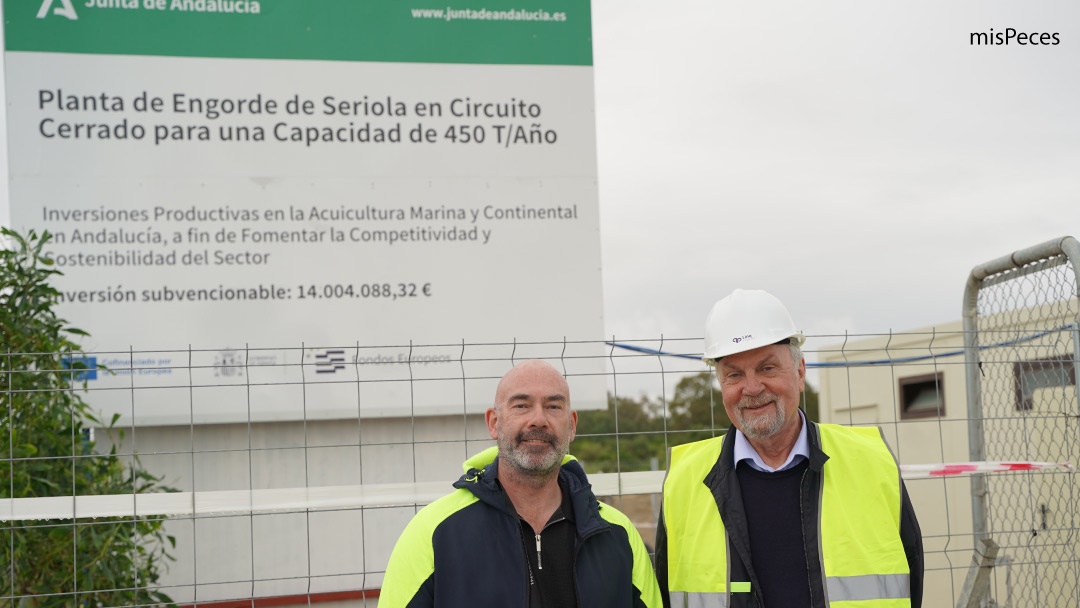
The technical side of the Acuicultura Cádiz project is being led by Børge Søraas, the project manager and a Norwegian biologist with a decade of experience managing salmon farms, as well as international assignments in Indonesia, Thailand and Cuba.
Regarding the plant, Børge Søraas explains that the civil work is being carried out by the local company EJOC, while the technology supplier is Innovaqua SL, which was chosen in a tender for its solid technical proposal, extensive experience in recirculation technology and competitive prices. In addition, the promoters are relying on the companies AIPORA for the civil engineering under the technical advice of Innovaqua SL and Linq Project.
To further strengthen the project, the developers are drawing on technical consultancy from Norwegian firms Iphora and Linq Project.
Recirculating aquaculture technology, Søraas stressed, is essential for farming this species due to historical issues with parasites in open-water systems. RAS environments allow for tight control over all critical production parameters, particularly water chemistry and biosecurity.
The current facility has capacity for 450 tonnes of Seriola dumerili per year and represents “just the first step in a larger plan that ultimately aims to reach 5,000 tonnes.”
With this first phase, he added, “we expect to learn a great deal-both about the species and the technology.” How quickly the next stages can be rolled out will depend on the success of this phase, as well as the resolution of certain challenges linked to power infrastructures within the port authority’s jurisdiction.
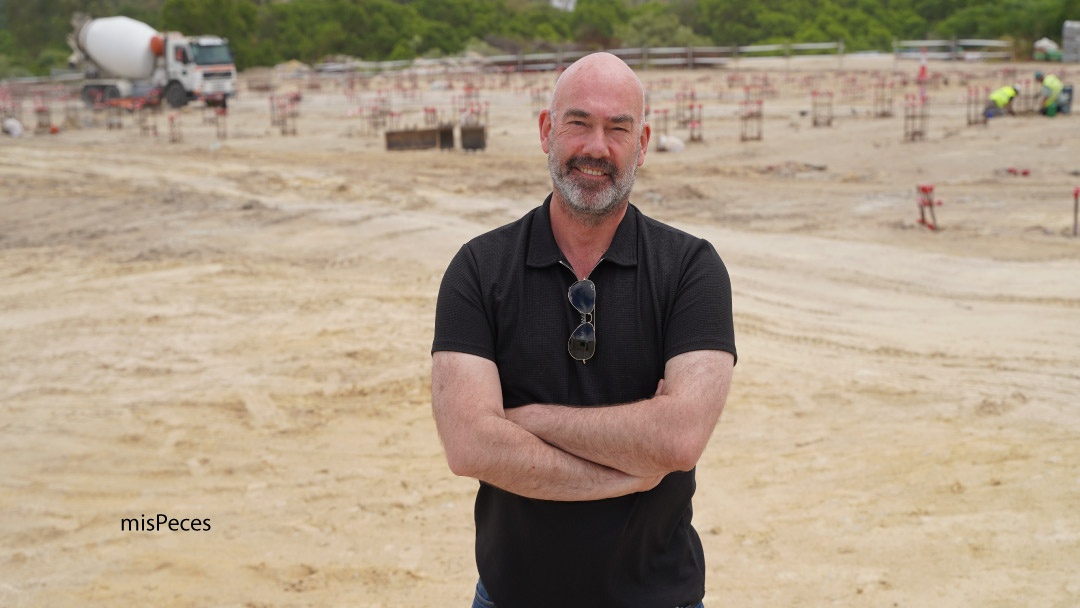 Børge Søraas |@misPeces
Børge Søraas |@misPeces
Going into more detail, Søraas explained that the facility is made up of five production units based on RAS: four with biofilters, and one without. The latter is intended to prevent off-flavour in the fish caused by geosmin, a naturally occurring compound. While it’s still too early to confirm its necessity for fish species, similar purging methods are already common with salmon and trout before harvest.
The first stocking is expected to begin in May next year. Under current plans, juvenile fish weighing 10 grams will be delivered every ten weeks from the Futuna Blue hatchery-located just metres from the new facility and also owned by the group. These juveniles will progress from juvenile tanks 1 and 2 to grow-out tanks 1 and 2, reaching markets size of 2.5 kg in approximately 40 weeks.
While the plant is designed to produce 450 tonnes annually, it has the potential to scale up 700 tonnes, subject to securing the appropriate licences.
The only company overseeing the full production cycle of greater amberjack
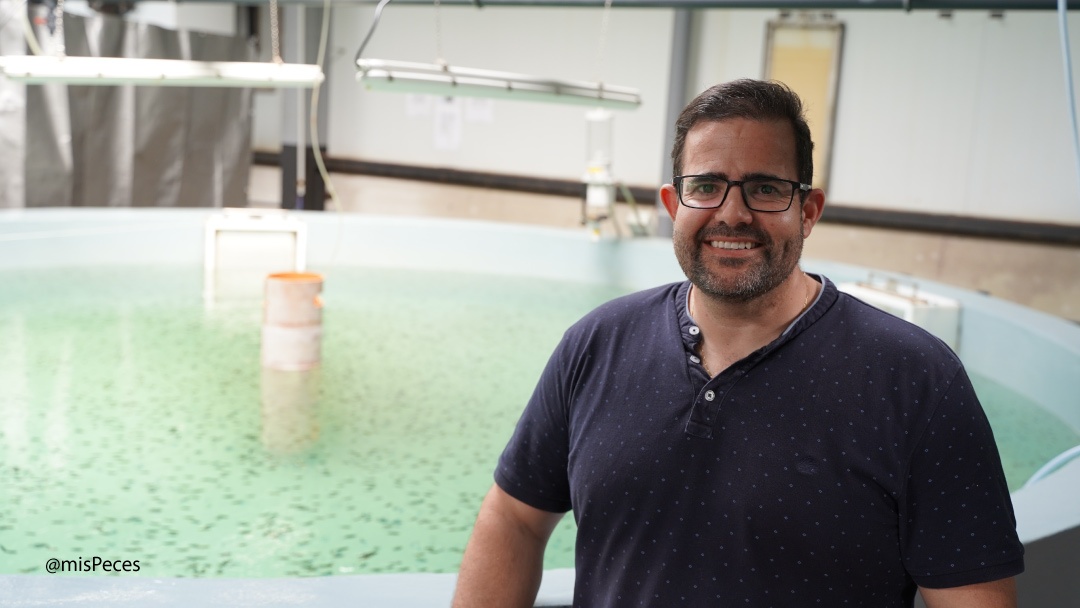 Desiderio Pérez, director manager Futuna Blue
Desiderio Pérez, director manager Futuna Blue
Beyond its technological edge, one of the most robust pillars of this project lies in its guaranteed year-round supply of greater amberjack juveniles, thanks to its in-house hatchery operated by Futuna Blue España.
In recent years, since Kingfish Norway AS took ownership, the hatchery’s juvenile production has steadily improved-not only in quantity but also in quality.
As Desiderio Pérez, Technical Director at Futuna, told misPeces, new protocols have been implemented across all phases of juvenile production-from broodstock management to larval rearing-enabling year-round output.
On a commercial scale, the team is now close to “closing the species life cycle” with the first offspring born from captive-bred broodstock.
This year, Pérez explained, “we are set to produce 1.2 million juveniles-more than enough to supply our Mediterranean clients and customers in other parts of the world.”
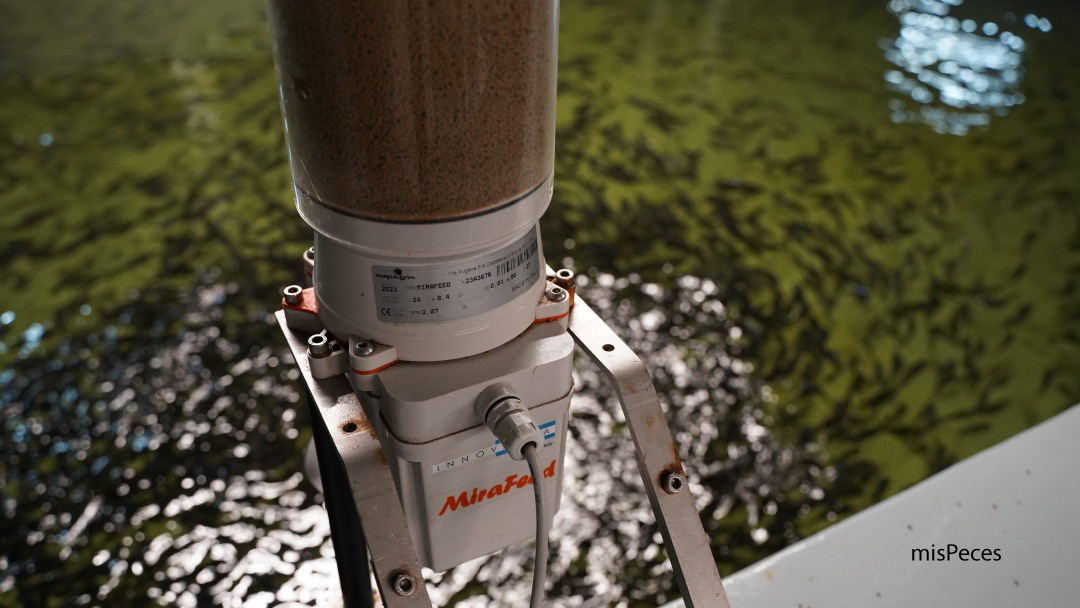 Juveniles de Seriola en Futuna Blue
Juveniles de Seriola en Futuna Blue

